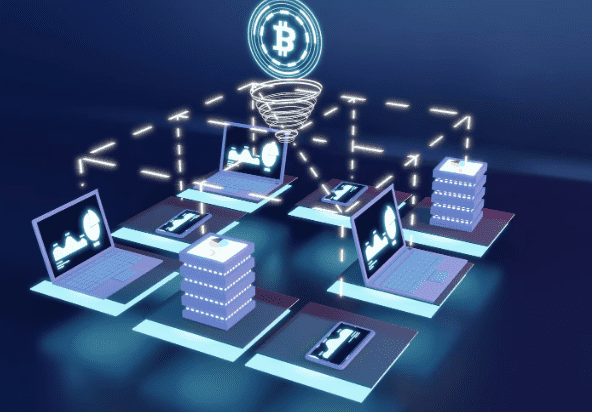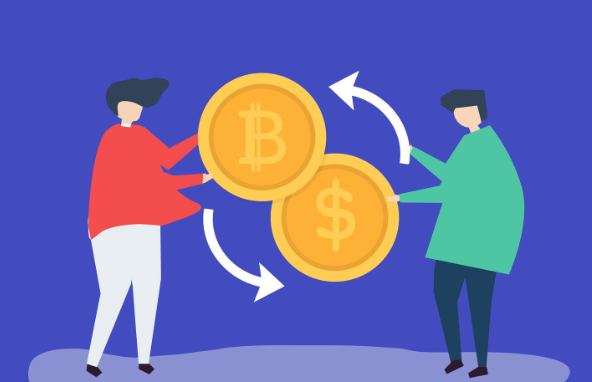The blockchain realm is undergoing a rapid change, and the layer‑2 crypto solutions are revolutionizing the entire process. In the United States, the acceptance of cryptocurrencies in daily life brings to focus the main problems of the top networks, such as Bitcoin and Ethereum, namely, scalability, transaction speed, and cost.
Layer-2 solutions are very much the answer and the core of the next-generation crypto technology. To continue this trail of thought, the developers are utilizing Layer-2 solutions, which are methods that exist on the blockchain of the app to improve performance and still have the security of that very same blockchain. Consequently, the use of these solutions is changing the whole story around the dApps, DeFi, and NFTs in a very positive manner by making blockchain quicker, less costly, and more convenient for users.
What follows in this post is a detailed discussion on Layer-2 crypto solutions, their significance, the major players in L2 networks, and how they lead the way in blockchain innovation in the U. S. and beyond.
What are layer‑2 crypto solutions?
layer‑2 crypto solutions involve understanding the fundamentals first, to get all straightened out.
Layer-1 is the base blockchain when it comes to generalizations — Bitcoin, Ethereum, or Solana, for instance. Networks apply direct transaction actions on the blockchain. Yet when the demand is at its peak, they run into limitations, like slow transaction speed and high gas fees.
That is when Layer-2 solutions come into play. Layer‑2 solutions operate on top of existing networks. Instead of replacing Layer‑1, they complement it by handling off-chain transactions and then recording the final results on the main blockchain.
Thus, reducing transaction volumes greatly allows transactions to become faster, cheaper, and more secure while maintaining decentralization.
To put it differently, Layer-2 crypto solutions are like energy-efficient locations for existing blockchains.
Why are layer‑2 crypto solutions So Important?
Efficient and accessible are the two most important factors for U. S. crypto users and investors. Let’s take a look at the reasons why Layer-2 solutions become vitally important:
- Lower Transaction Fees
Ethereum gas fees have been a constant source of frustration. The good news is that L2 solutions will allow users to perform off-chain transactions at a small fraction of the cost. Therefore, the market for DeFi and NFT trading becomes much broader and cheaper for American investors and developers.
- Faster Transaction Speeds
Layer-1 networks such as Ethereum can handle around 15–20 transactions per second. On the other hand, Layer-2 networks can handle thousands of transactions, which is why they are the perfect choice for real-time interactive apps.
- Enhanced Scalability
With more users coming to the blockchain, Layer-2 is already in the picture as the solution for the scalability issue. Hence, L2 can still process large amounts of traffic efficiently without creating a bottleneck in the base layer, thus providing smooth performance even during high usage.
- Better User Experience
Along with lower prices and quicker replies, crypto is becoming more common. In fact, crypto offers low-cost and fast-confirmation service, payment, gaming, and decentralized finance, etc. All this works together and contributes to the U. S. mainstream adoption.
- Environmental Benefits
By processing transactions off-chain, layer‑2 crypto solutions have a lower carbon footprint, and tech companies and regulators in the U. S. whose sustainability goals are in line with zero energy consumption would welcome this.

Types of layer‑2 crypto solutions
Layer-2 technologies are not the same. Each of them has its own way of approaching the problem of scalability. The main categories are given below:
1. Rollups
Rollups aggregate a number of transactions and then record them in one transaction on the main blockchain.
- Optimistic Rollups (e.g., Arbitrum, Optimism): starting with the presumption that all transactions are valid but allowing for later challenges.
- ZK-Rollups (e.g., zkSync, StarkNet): proving the validity of transactions using zero-knowledge proofs as a basis for instantaneous verification with absolute mathematical accuracy.
Rollups are thus considered the most popular layer‑2 crypto solutions on Ethereum at the moment.
2. State Channels
State channels enable users to make direct transactions off-chain and only submit the final result to the blockchain. For instance, with the use of the Bitcoin Lightning Network model, it is possible to make instant, low-fee payments.
3. Plasma
Plasma creates smaller “child chains” that handle transactions independently before reporting back to the main chain. Although less popular today, it nevertheless laid the foundation for modern L2 designs.
4. Sidechains
Sidechains are blockchains that are separate and connect to the main chain through a bridge. They have their own regulations, but can still communicate with the main network. For example, Polygon (formerly Matic) is a well-known sidechain.
Top layer‑2 crypto solutions in 2025
Now, let us zoom in on the top L2 crypto networks that are not only bringing a barrel of new users but also innovations in the U. S. and worldwide:
1. Arbitrum
Arbitrum is a major Layer-2 Ethereum network. The network cuts Ethereum fees and speeds up the transactions with the help of Optimistic Rollups, while Ethereum’s security is not compromised. Uniswap, Aave, and many other DeFi projects are becoming more and more efficient by moving to Arbitrum.
2. Optimism
Optimism concentrates on developer convenience and the uniformity of being used by casual Ethereum dApps. Its backward-looking public goods funding has made it particularly attractive to developers in the U.S.
3. Polygon
While Polygon is a sidechain from a technical perspective, its Layer-2 scaling solutions are now an important part of U. S. NFT and gaming projects. It even provides Ethereum compatibility, inexpensive and rapid transactions, and enormous scalability.
4. zkSync
zkSync is among the top choices of ZK-Rollup for smooth and safe transactions. It is becoming a prominent player due to its widely accepted cryptography practices and developer-friendly setup.
5. Lightning Network
For the Bitcoin community, the Lightning Network continues to be the most preferred Layer-2 solution. It facilitates instant BTC payments for a nominal fee — one of the key factors for U.S.
The U. S. Perspective: Regulation and Growth
In the U. S., Layer-2 crypto solutions are integral to overcoming the hurdles of blockchain adoption while maintaining compliance with regulators.
As the SEC and others work to define digital asset laws, Layer 2 networks propose a solution — uniting the affordability that financial applications need with the openness of the blockchain.
Also, the other major American exchanges, including Coinbase, have rolled out their own L2 projects. As an illustration, Base is Coinbase’s Layer-2 network that is meant to help Ethereum be quicker and less expensive for all users in the U.S.
These developments signify that Layer-2 crypto solutions can no longer be treated simply as tech upgrades; they are the “mainstream Web3 adoption” bridges.
The Future of Layer-2 Crypto Solutions
The bright horizon for Layer-2 technology is forthcoming. According to the analyst’s view, by 2026, more than 70% of the total Ethereum transactions will be done through Layer-2 networks.
Future scenarios include:
- A deeper bond between L1 and L2 makes it easier for the users to interact.
- More institutional acceptance when U. S. banks and fintechs dive into L2 payment channels.
- The interoperability between the different L2 chains will be so improved that data and assets will be able to move freely between different chains.
- Privacy will be elevated to a whole new level with the new cryptographic user data protection techniques.
- At last, Layer-2 crypto solutions are responsible for leading towards a blockchain ecosystem that is faster, fairer, and more efficient for all.
How to Get Started with Layer-2 Crypto Solutions
In case you are a U. S. investor, developer, or enthusiast, here’s a step-by-step guide on exploring L2 technology:
- Start with the most popular Layer-2 wallets, such as MetaMask (Arbitrum or Optimism) or zkSync Wallet.
- Transfer your assets from Ethereum to a layer 2 network using confirmed bridges.
- Look into the various decentralized applications (dApps) that are built on L2 platforms, such as DeFi, NFT, etc.
- Always be up-to-date with the latest security practices and regulations in your area.
Consider the following major U. S. exchanges like Coinbase or Kraken, which now grant access to several L2 networks.
By this means, you will have the advantage of quicker transactions, reduced fees, and an opportunity to participate in the ever-expanding decentralized innovation.
Final Thoughts
The development of Layer-2 crypto solutions heralds a significant milestone in the scalability and adoption of blockchain technology in the U. S. They provide a solution that tackles the most significant challenges of crypto—speed, cost, and usability—while allowing for complete decentralization.
As Ethereum, Bitcoin, and other networks mature, Layer-2 solutions will be at the forefront of innovation in the areas of gaming, DeFi, payments, etc. For the U. S. investors and developers, this is the right moment to dive into this technology and take part in the next blockchain growth wave.



